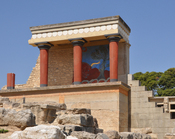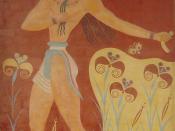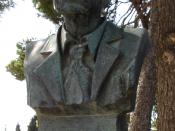Sir Arthur Evans was born on the 8th of July, 1851 in Nash Mills, England and died on the 11th of July, 1941. He worked as a British archaeologist. Arthur Evans' father was a paper manufacturer and also an amateur archaeologist; and it was because of him that Arthur Evans had developed a very strong fascination in archaeology at a young age, and grew up to accomplish manygreat deeds.
Arthur Evans received his education at Harrow School, The universities of Oxford and Göttingen and was appointed a fellow of Brasenose College, Oxford. In 1884 he became curator of the Ashmolean Museum, Oxford, and a post he held until 1908, when he was appointed extraordinary professor of prehistoric archaeology at the university. Arthur Evans is well known for his excavations at the city of Knossos and for discovering the Minoan culture.
His Works:
In 1894, Arthur Evans began on his most famous work, The Palace of Minos on the island of Crete in Greece.
The excavations began at a very rapid pace, and by the end of 1903, almost the entire palace had been uncovered and work began on the surrounding areas. Arthur Evans continued his work until 1931, when it was stopped due the end of World War 1. After the war, he wrote and published his first book entitled, The Palace of Minos at Knossos.
Excavations at Knossos also revealed some 3000 clay tablets inscribed in two scripts later known as Linear A which is a Minoan script and Linear B which is an early Greek dialect. He then turned Knossos into a museum on Minoan culture, displaying many artefacts and creating an image of what it was like back in those days. Arthur Evans' other works include Cretan Pictographs and Prae-Phoenician Script (1895), The Mycenaean Tree...


